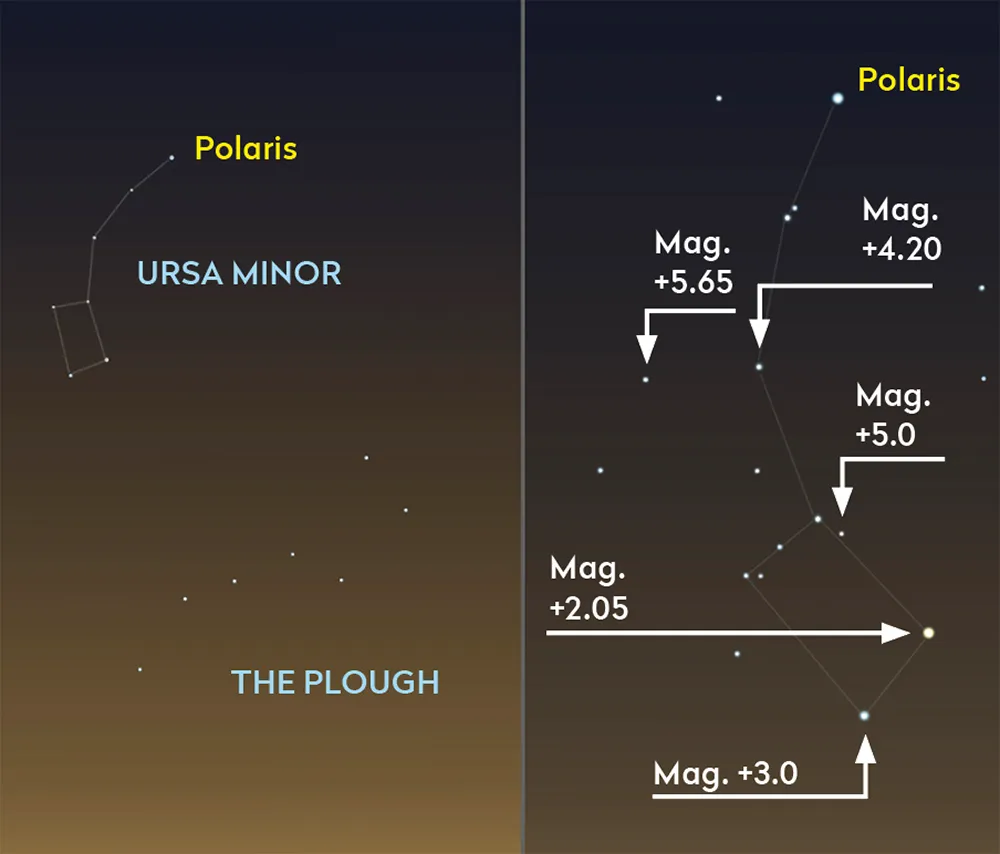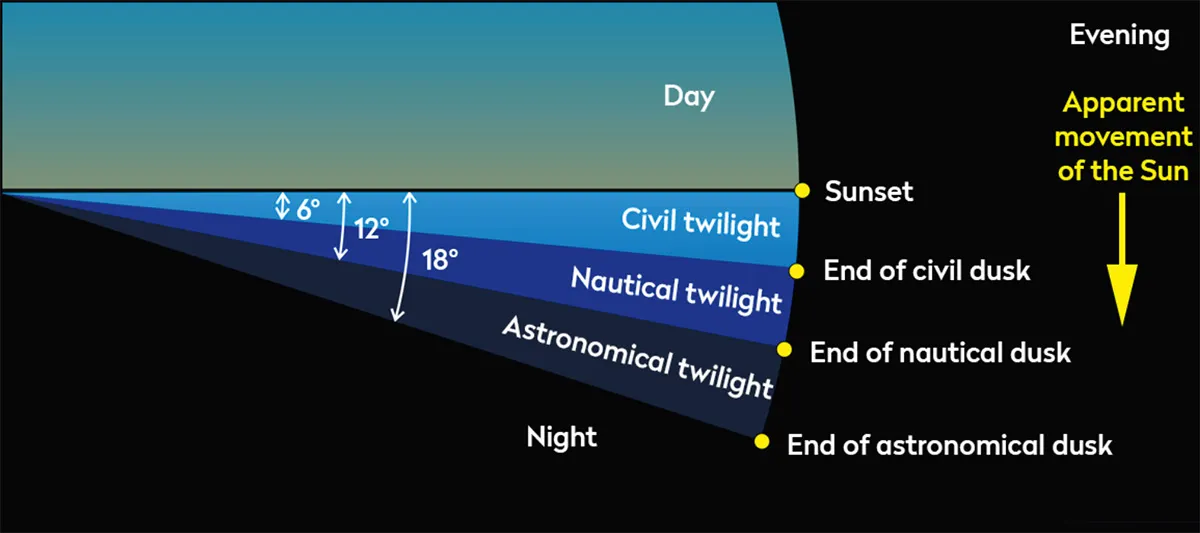The number of stars a person can see in a clear, moonless night sky depends on the keenness of your eyesight and the background sky’s brightness.
The latter varies daily and seasonally and with the amount of skyglow caused by light pollution.
Certain times of the year are the best time to see the stars.
Given the darkest possible natural conditions – midnight at midwinter, with the Sun at its lowest point below the northern horizon – only a dozen or so of the very brightest stars can be seen in the night sky from a city centre backyard.

However, under dark, rural UK skies, the eye is capable of discerning stars as faint as magnitude +5.5 ( or help understanding this, read our guide to stellar magnitude).
There are around 2,800 stars on the celestial sphere brighter than this, so at any one time around 1,400 potentially visible stars lie above the observer’s horizon.
The actual number of stars visible is under 1,000 because of the effects of atmospheric extinction, which dims objects towards the horizon.

At the start of nautical twilight (the Sun more than 6° below the horizon) the brightest stars begin to appear, and by the start of astronomical twilight (the Sun more than 12° below the horizon) a few hundred stars can be discerned.
From the best locations, those with excellent vision might be able to see stars in the night sky down to magnitude +6.5.
The Yale Bright Star Catalogue lists 9,110 of what it considers “naked eye visible stars” above this magnitude.
Some stars are as old as 13.8 billion years - as old as the Universe itself - meaning that when you gaze up at the night sky, you're peering back to the early Universe.

